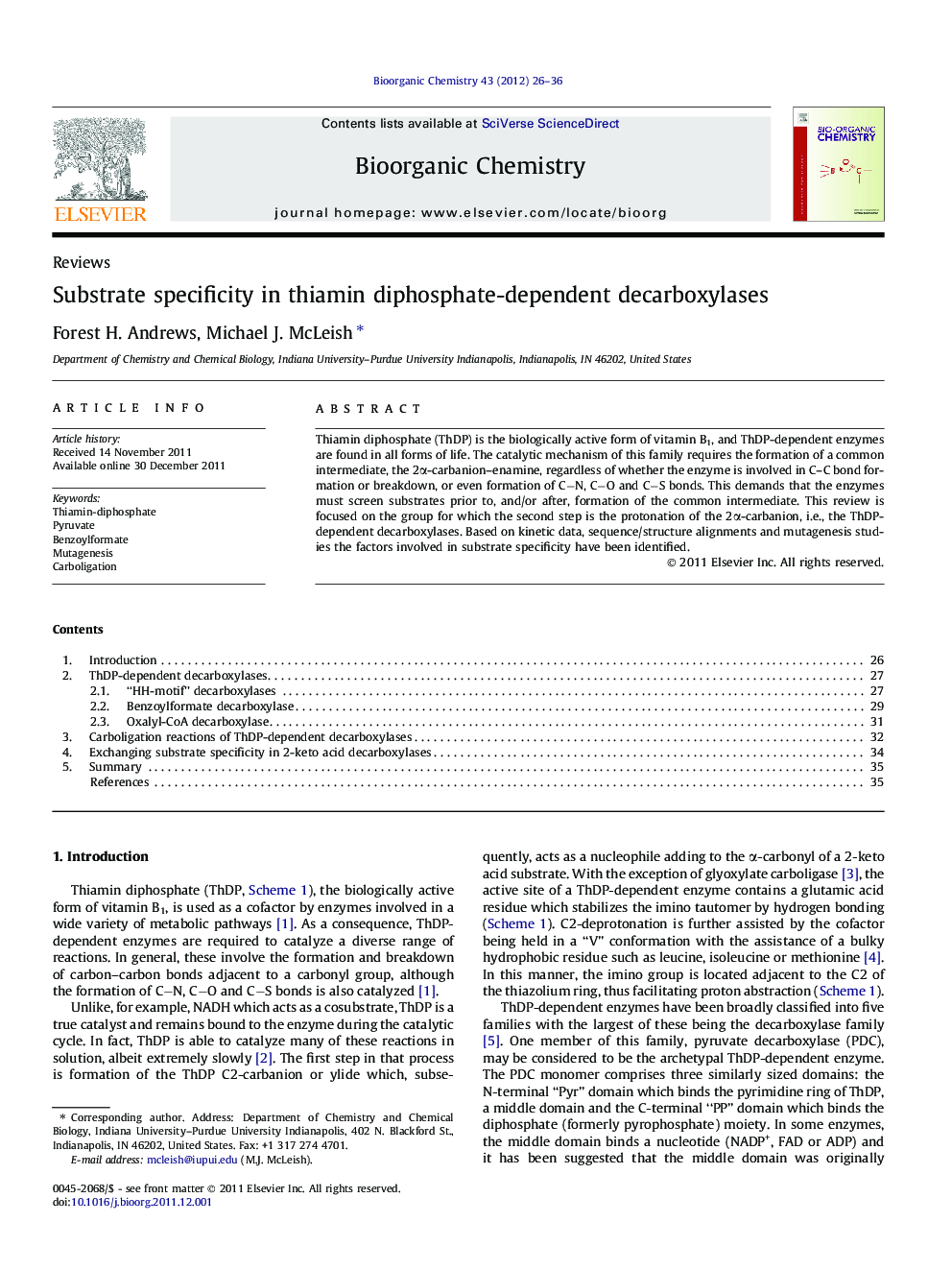| Article ID | Journal | Published Year | Pages | File Type |
|---|---|---|---|---|
| 1355653 | Bioorganic Chemistry | 2012 | 11 Pages |
Thiamin diphosphate (ThDP) is the biologically active form of vitamin B1, and ThDP-dependent enzymes are found in all forms of life. The catalytic mechanism of this family requires the formation of a common intermediate, the 2α-carbanion–enamine, regardless of whether the enzyme is involved in C–C bond formation or breakdown, or even formation of C−N, C−O and C−S bonds. This demands that the enzymes must screen substrates prior to, and/or after, formation of the common intermediate. This review is focused on the group for which the second step is the protonation of the 2α-carbanion, i.e., the ThDP-dependent decarboxylases. Based on kinetic data, sequence/structure alignments and mutagenesis studies the factors involved in substrate specificity have been identified.
Graphical abstractFigure optionsDownload full-size imageDownload as PowerPoint slideHighlights► Thiamin diphosphate-dependent enzymes catalyze a wide range of reactions. ► The focus of this review is the decarboxylases. ► Crystallographic studies and mutagenesis help identify important residues. ► Substrate specificity in carboligation reactions is also discussed. ► Exchanging substrate specificity proves to be difficult but not impossible.
